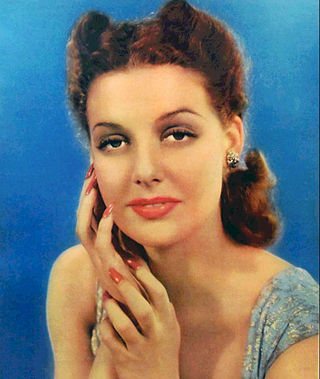
Clara Lou "Ann" Sheridan was an American actress and singer. She is best known for her roles in the films San Quentin (1937) with Humphrey Bogart, Angels with Dirty Faces (1938) with James Cagney and Bogart, They Drive by Night (1940) with George Raft and Bogart, City for Conquest (1940) with Cagney and Elia Kazan, The Man Who Came to Dinner (1942) with Bette Davis, Kings Row (1942) with Ronald Reagan, Nora Prentiss (1947), and I Was a Male War Bride (1949) with Cary Grant.
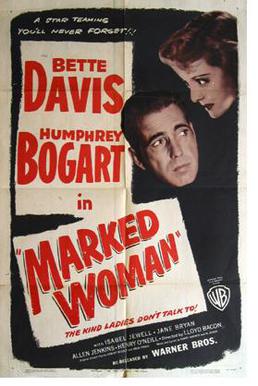
Marked Woman is a 1937 American dramatic crime film directed by Lloyd Bacon and starring Bette Davis and Humphrey Bogart, with featured performances by Lola Lane, Isabel Jewell, Rosalind Marquis, Mayo Methot, Jane Bryan, Eduardo Ciannelli and Allen Jenkins. Set in the underworld of Manhattan, Marked Woman tells the story of a woman who dares to stand up to one of the city's most powerful gangsters.

Beat the Devil is a 1953 adventure comedy film directed by John Huston, starring Humphrey Bogart, Jennifer Jones, and Gina Lollobrigida, in her American debut, and featuring Robert Morley, Peter Lorre and Bernard Lee. Huston and Truman Capote wrote the screenplay, loosely based upon the 1951 novel of the same name by British journalist Claud Cockburn writing under the pseudonym James Helvick. Huston made the film as a sort of loose parody of the 1941 film The Maltese Falcon, which Huston directed and in which Bogart and Lorre appeared. Capote said, "John [Huston] and I decided to kid the story, to treat it as a parody. Instead of another Maltese Falcon, we turned it into a... [spoof] on this type of film."
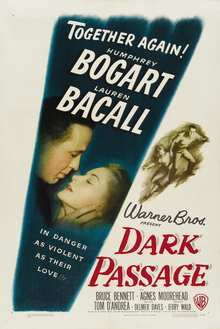
Dark Passage is a 1947 American film noir directed by Delmer Daves and starring Humphrey Bogart and Lauren Bacall. The film is based on the 1946 novel of the same title by David Goodis. It was the third of four films real-life couple Bacall and Bogart made together.
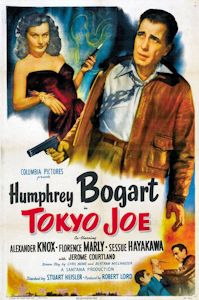
Tokyo Joe is a 1949 American film noir crime film directed by Stuart Heisler and starring Humphrey Bogart. This was Heisler's first of two features starring Bogart, the other was Chain Lightning that also completed in 1949 but was held up in release until 1950.

They Drive by Night is a 1940 American film noir directed by Raoul Walsh and starring George Raft, Ann Sheridan, Ida Lupino, and Humphrey Bogart, and featuring Gale Page, Alan Hale, Roscoe Karns, John Litel and George Tobias. The picture involves a pair of embattled truck drivers and was released in the UK under the title The Road to Frisco. The film was based on A. I. Bezzerides' 1938 novel Long Haul, which was later reprinted under the title They Drive by Night to capitalize on the success of the film.

Knock on Any Door is a 1949 American courtroom trial film noir directed by Nicholas Ray and starring Humphrey Bogart. The movie was based on the 1947 novel of the same name by Willard Motley. The picture gave actor John Derek his breakthrough role as young hoodlum Nick Romano, whose motto was "Live fast, die young, and have a good-looking corpse."

Passage to Marseille, also known as Message to Marseille, is a 1944 American war film made by Warner Brothers, directed by Michael Curtiz. The screenplay was by Casey Robinson and Jack Moffitt from the novel Sans Patrie by Charles Nordhoff and James Norman Hall. The music score was by Max Steiner and the cinematography was by James Wong Howe.
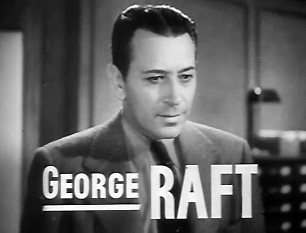
Invisible Stripes is a 1939 Warner Bros. crime film starring George Raft as a gangster unable to go straight after returning home from prison. The movie was directed by Lloyd Bacon and also features William Holden, Jane Bryan and Humphrey Bogart. The screenplay by Warren Duff was based on the novel of the same title by Warden Lewis E. Lawes, a fervent crusader for prison reform, as adapted by Jonathan Finn.

Up the River is a 1930 American pre-Code comedy film directed by John Ford, and starring Claire Luce, Spencer Tracy and Humphrey Bogart. The plot concerns escaped convicts, as well as a female convict. It was the feature film debut role of both Tracy and Bogart. Despite Bogart being billed fourth, Tracy's and Bogart's roles were almost equally large, and this is the only film in which they appeared together. Up the River is also Bogart's only film directed by John Ford. Bogart's image is featured with Luce on some of the film's posters rather than Tracy's since Bogart was the romantic lead with Luce. Fox remade the film in 1938 starring Preston Foster and Tony Martin playing their roles.

Action in the North Atlantic, also known as Heroes Without Uniforms, is a 1943 American black-and-white war film from Warner Bros. Pictures, produced by Jerry Wald, directed by Lloyd Bacon, that stars Humphrey Bogart and Raymond Massey as officers in the U.S. Merchant Marine during World War II. Typical of other films in the era, Action in the North Atlantic was created as a morale-boosting film during this world war and a film that told the story of unsung heroes. As noted by film critic Bosley Crowther, "... it's a good thing to have a picture which waves the flag for the merchant marine. Those boys are going through hell-and-high-water, as 'Action in the North Atlantic' shows."

Joe Sawyer was a Canadian film actor. He appeared in more than 200 films between 1927 and 1962, and was sometimes billed under his birth name.
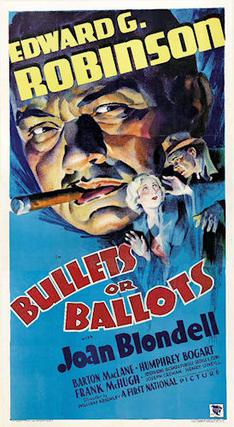
Bullets or Ballots is a 1936 American crime thriller film starring Edward G. Robinson, Joan Blondell, Barton MacLane, and Humphrey Bogart. Robinson plays a police detective who infiltrates a crime gang. This is the first of several films featuring both Robinson and Bogart.
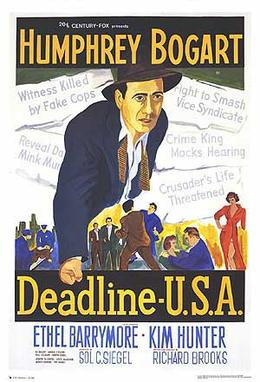
Deadline – U.S.A. is a 1952 American film noir crime film and starring Humphrey Bogart, Ethel Barrymore and Kim Hunter, written and directed by Richard Brooks. It is the story of a crusading newspaper editor who exposes a gangster's crimes while trying to keep the paper from going out of business; he is also attempting to reconcile with his ex-wife.
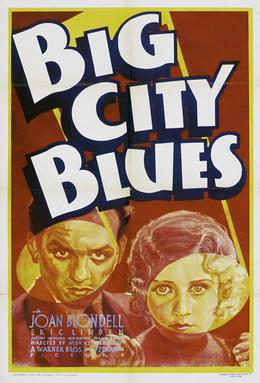
Big City Blues is a 1932 American pre-Code drama film directed by Mervyn LeRoy and distributed by Warner Bros. The film is based on the play New York Town by Ward Morehouse and stars Joan Blondell and Eric Linden, with uncredited early appearances by Humphrey Bogart and Lyle Talbot.

Men are Such Fools is a 1938 American romantic comedy directed by Busby Berkeley and written by Norman Reilly Raine and Horace Jackson. The film stars Wayne Morris, Priscilla Lane, Humphrey Bogart, Hugh Herbert, Johnnie Davis, and Penny Singleton. The film was released by Warner Bros. on July 16, 1938. The movie is adapted from the novel by the same name, Men Are Such Fools, by Faith Baldwin.

The Big Shot (1942) is an American film noir crime drama film starring Humphrey Bogart as a crime boss and Irene Manning as the woman he falls in love with. Having finally reached stardom with such projects as The Maltese Falcon (1941), this would be the last film in which former supporting player Bogart would portray a gangster for Warner Bros..

You Can't Get Away with Murder is a 1939 crime drama directed by Lewis Seiler, starring Humphrey Bogart and Gale Page, and featuring "Dead End Kid" leader Billy Halop. The film is from Bogart's period of being cast in B pictures by Warner Bros., before his breakthrough as a leading man in High Sierra two years later. The film is based on the play "Chalked Out" by Lewis E. Lawes.
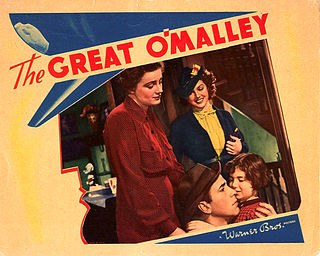
The Great O'Malley is a 1937 American crime drama film directed by William Dieterle and starring Pat O'Brien, Sybil Jason, Humphrey Bogart, and Ann Sheridan. The 1925 silent version The Making of O'Malley starred Milton Sills, Dorothy Mackaill and Helen Rowland.

China Clipper is a 1936 American drama film directed by Ray Enright, written by Frank Wead and starring Pat O'Brien, Ross Alexander, Beverly Roberts, Humphrey Bogart and, in his final motion-picture appearance, veteran actor Henry B. Walthall. Walthall was gravely ill during production and his illness was incorporated into his character's role. He died during production.



















